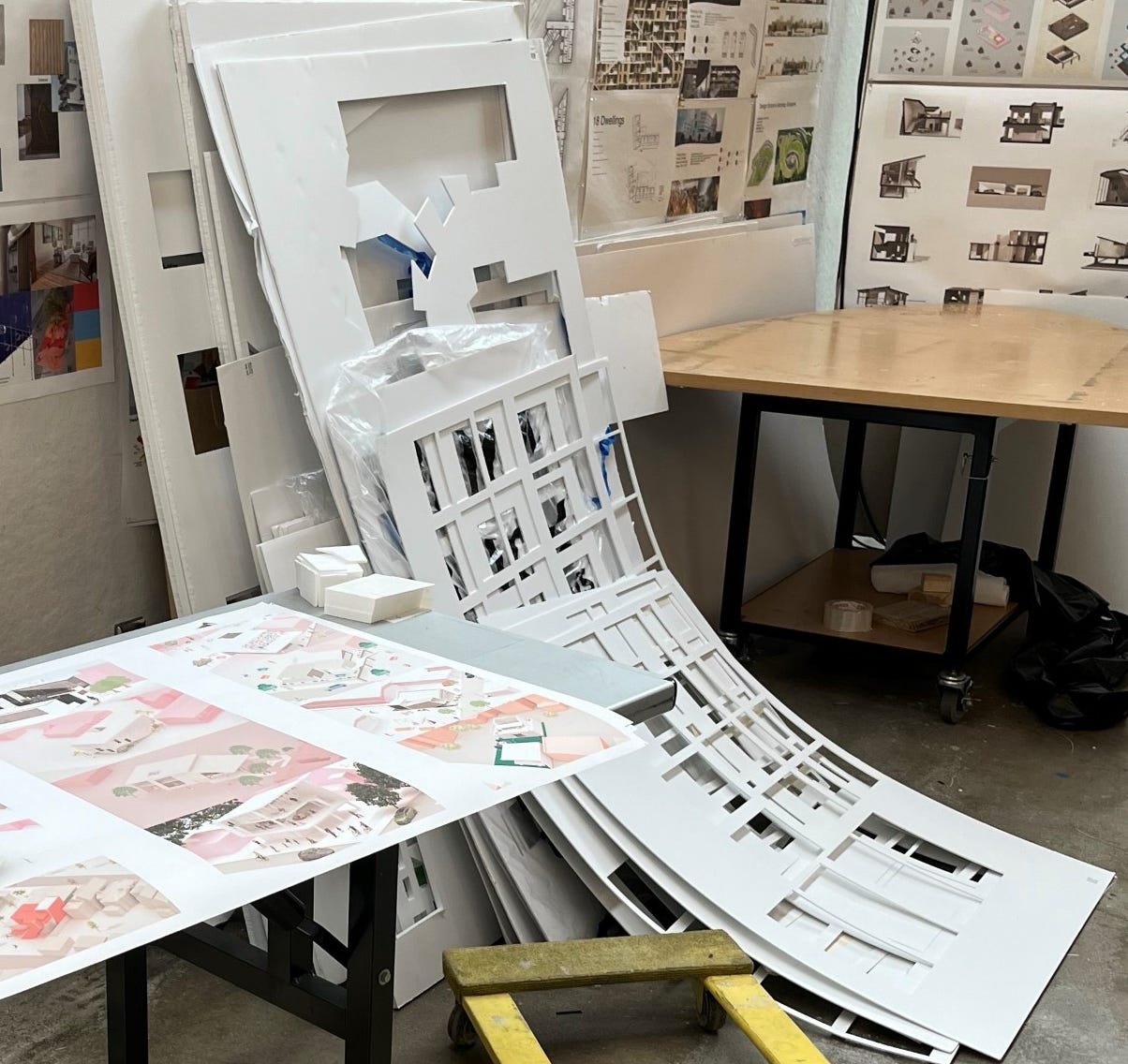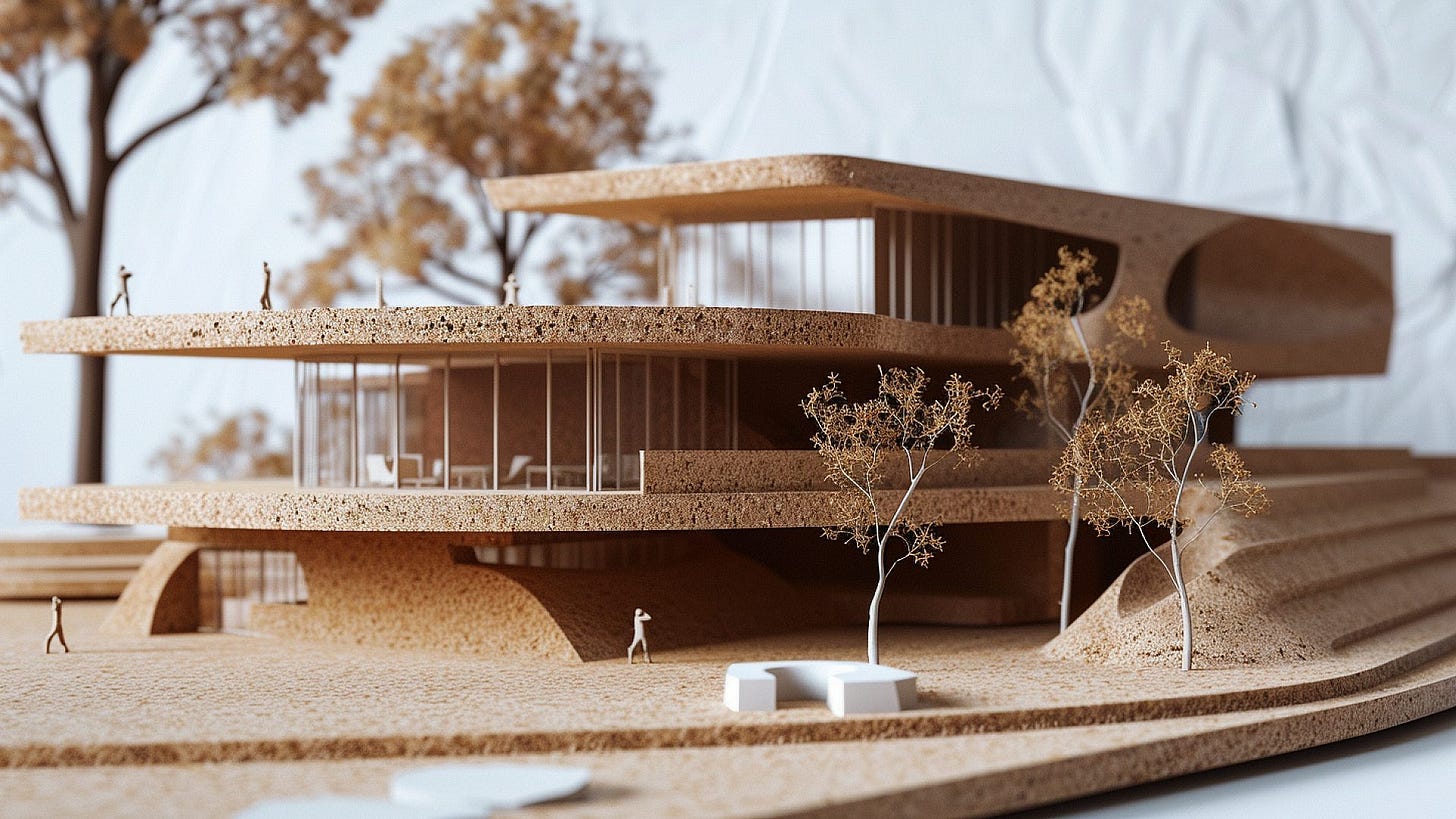The Problem with Foam
... and why we may need to reconsider the materials in our architectural models.
It seems to be a rite of passage to spend considerable hours cutting materials during the week before review, whether that be on the zund, cnc, laser cutter, or the dreaded hand-cutting method. Each semester, chipboard, bristol, foam, and acrylic scrap pieces continually accumulate on every surface, and subsequently, studios are scolded for not picking up after themselves. However, there is one material that is undeniably the most popular among Knowlton students: foam core. Foam core, which consists of a lightweight polystyrene, sandwiched between 2 pieces of paper, is advantageous in that it’s lightweight, durable, easily cut and glued, and also pretty cheap compared to other materials.
My issue with foam core is that not only does it release VOCs and carcinogens into our building when students inevitably stick it in the laser cutter, but when inefficiently used, ends up being very wasteful and ends up in the landfill, where it can take around 500 years to break down completely.
Now, you may be asking, what happens after these hundreds of years when the foam has decomposed? The material breaks down into smaller plastic particles, called microplastics, which pollute the soil nearby, rendering it useless for ecological and agricultural purposes. Additionally, these microplastics can actually seep into groundwater sources, which can end up in our water supply, where these microplastics become permanently stored in our bodies, linked to cancer and CVD. And this is not just about foam, this applies to ALL plastics humans produce, which in our case, involves acrylic, plexiglass, resin, and 3D printing filament.
Foam core boards are notoriously non-biodegradable, and their decomposition can take an incredibly long time, estimated at around 450 to 500 years. (Source)
I will concede, buying 2 boards of foamcore from Blick will not single-handedly destroy the planet, but instead of buying large amounts of foamcore which will find its way into the trash can during semester cleanup, there are other materials which are less harmful to the environment that can supplement and even replace foam and other plastics.
Instead of foam, you can also use
Corrugated Cardboard
Bristol or vinyl can be lasered to cover floors, walls, and exposed edges in the model (if you’re worried about the look or want to emulate the clean white). The exposed edges can be used to your advantage (or against you if you choose to ignore how they are laid out). The texture on the sides and absence thereof on the top make the material perfect for some designs, but may invite questions for others.
Bass/Balsa wood
If a main component of your project is that it promotes sustainability (whose doesn’t these days), why not use a sustainable material to represent your design? Bass or balsa wood is also relatively affordable. Wood is much more realistic than foam, so if you worry that your design might be seen as unrealistic in terms of function or program, the material might persuade your jurors.
Cork
Cork adds such an undeniable texture and character that foam completely lacks. Another material used in buildings, the material also has a bit of cultural significance that could be used in favor of your design. Of course, also more sustainable than foam.
“Cork harvesting neither cuts down or harms the cork tree itself, meaning it continues living and is incredibly eco-friendly. In fact, cork harvesting actually helps clean the air and undo the damage caused by greenhouse gases. Cork harvesting is a truly green process and should be fully supported.” (SPD UK)
Ultimately, the materials we choose for our creations have an end phase, and we must live with the complications of their decomposition. Even if you still opt for foamcore (understandably), be cognizant of how efficiently you’re using material in order to save money, time on the zund, and the planet.










